Case Study: Mithi River Plastic Waste Cleanup Project by Earth5R
Introduction
The Mithi River, which winds through the urban sprawl of Mumbai, has long been a vital resource for the city. Once rich in biodiversity and ecological importance, the river has become a symbol of environmental degradation due to years of unchecked pollution. The Mithi river plastic waste, industrial effluents, and municipal garbage have turned the river into a toxic channel, choking aquatic life, increasing flood risks, and threatening the health and livelihoods of nearby communities.
To address this crisis, Earth5R, in collaboration with United Nations Technology Innovation Labs (UNTIL), Huhtamäki Oyj, RiverRecycle, and the Mumbai Municipal Corporation, launched the Mithi River Plastic Waste Cleanup Project in October 2020. The project is based on innovation, sustainability, and community engagement and supported by a whopping €0.6 million in funding.
A standout feature of the project is the deployment of solar-powered technology to collect and process plastic waste from the river. This state-of-the-art system not only demonstrates the potential of renewable energy in tackling environmental challenges but also reinforces Earth5R’s commitment to sustainable and scalable solutions.
The Problem: Mithi River Plastic Waste – Crisis
The Mithi River, a critical urban waterway spanning 17.8 kilometers. It is now seriously degraded environmentally and that is what holds for it. It serves as a sink for all untreated industrial effluents and municipal wastes in the form of plastic pollutants and organic debris, as well as an improvised sink to which hypoxia is associated, creating huge disarrangement in aquatic ecosystems, increasing risks of flooding, and causing cascading impacts on biodiversity, water quality, and health.
- Industrial Effluents: Toxic chemicals from factories pollute the river, harming aquatic ecosystems and contaminating water supplies.
- Municipal Waste: Every day, tons of household garbage, untreated sewage, and organic waste are dumped into the river.
- Plastic Waste: Single-use plastics, LDPE, HDPE, and packaging materials form a significant portion of the river’s pollution, eventually breaking down into harmful microplastics.
- Organic Debris: Cattle-rearing byproducts and invasive water hyacinths further exacerbate the river’s blockages.
These pollutants have caused:
- A rapid decline in biodiversity.
- Deterioration of water quality, thereby becoming a severe threat to health.
- Choked waterways, leading to frequent flooding during monsoons.
The urgent and imperative call for large innovative solutions to restore the ecological balance was laid on the banks of the river.
Earth5R’s Community and Solar-Powered Intervention for the Mithi River Plastic Waste Problem
1. Solar-Powered Technology: A Game-Changer
At the heart of the Mithi River plastic waste cleanup project, is the solar-powered plastic recovery unit, a pioneering technological solution developed by Earth5R and its partners.
- How It Works:
The solar-powered unit is strategically placed in the river to block floating plastic debris. The system collects the plastic waste and transports it to the riverbank for processing. Powered entirely by renewable energy, the unit ensures that the waste collection process is efficient, environmentally friendly, and scalable. - Processing Plastic Waste – Mithi river plastic waste:
Once brought to land, the plastic waste is segregated, washed, dried, and shredded. High-value plastics are sent for recycling, while low-value plastics are processed through EU-approved pyrolysis technology to produce industrial-grade oil. - Daily Recovery Impact:
The unit collects an average of 7 tons of plastic waste per day, significantly contributing to the project’s overall waste recovery goals.
This innovative use of solar energy highlights the project’s commitment to sustainability while showcasing the potential of clean energy technology in solving environmental challenges.
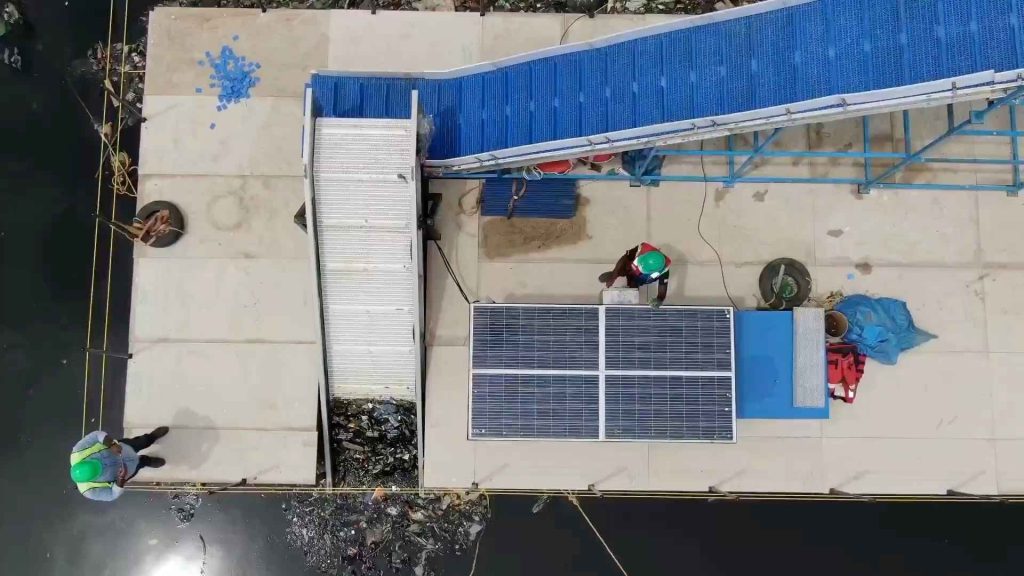
2. Large-Scale Plastic and Waste Recovery
Earth5R’s extensive waste recovery initiative shows the power of scalable, technology-driven solutions. By targeting high-impact pollutants like LDPE and single-use plastics, the project not only restores the Mithi River’s ecological balance but also demonstrates how the consistent efforts can deliver measurable environmental results and promote long-term sustainability in urban ecosystems.
In addition to the solar-powered unit, Earth5R has implemented an extensive waste recovery system to address the river’s pollution comprehensively:
- Daily Impact:
The project removes 10 tons of waste per day, including 4 tons of plastic such as LDPE, HDPE, and single-use packaging materials. - Monthly and Annual Impact:
- 300 tons of waste are recovered monthly, including 120 tons of plastic.
- 3,600 tons of waste are removed annually, with 1,440 tons of plastic recycled.
- Cumulative Impact (October 2020–November 2024):
- 11,100 tons of waste, including 4,440 tons of plastic, have been removed from the Mithi River with the help of the Mithi river plastic waste cleanup project.
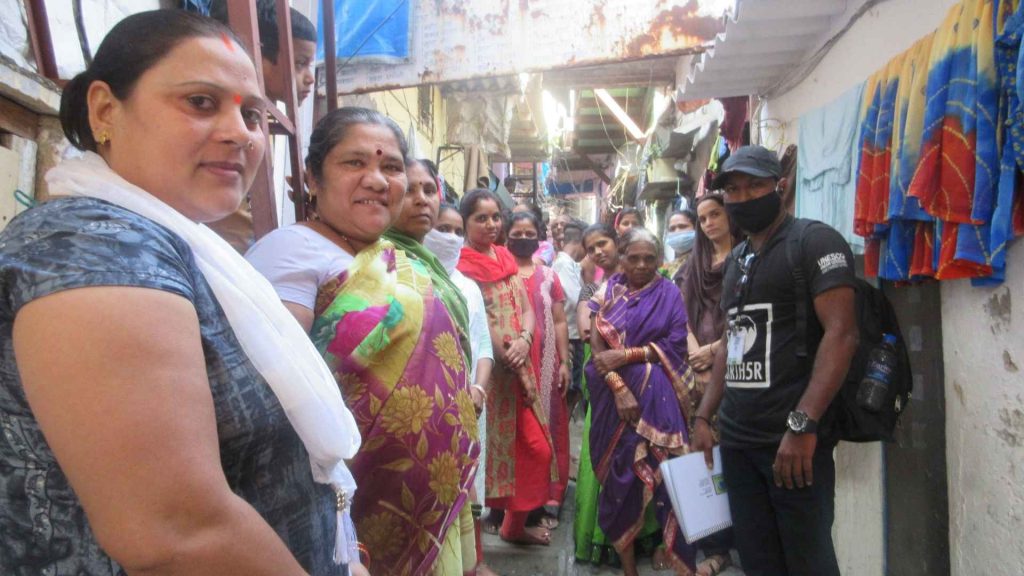
3. Community Engagement and the 5R Model
Through Earth5R’s 5R model, community engagement becomes the backbone of sustainability, blending education, incentives, and livelihood opportunities. By involving citizens directly in waste management, the project drives collective ownership, shifts waste from landfills to productive uses, and creates a replicable model for economic and environmental transformation in urban ecosystems.
The project’s success is rooted in Earth5R’s 5R model—Respect, Reduce, Reuse, Recycle, Restore—which integrates community involvement with sustainable practices:
- Community Training:
Earth5R has trained 10,000 families and 500 businesses in waste segregation and circular economy practices. Participants learn how to process organic waste into compost, which they use to grow herbs and medicinal plants. - Incentives for Plastic Collection:
Citizens are paid for handing over segregated plastic waste, creating a financial incentive to participate in the cleanup efforts. - Livelihood Opportunities:
Marginalized communities are trained to upcycle waste into eco-friendly products like paper bags, lamps, and handicrafts, generating sustainable income.
By actively involving residents and businesses in the cleanup process, Earth5R has created a movement that empowers communities and ensures the project’s long-term sustainability.
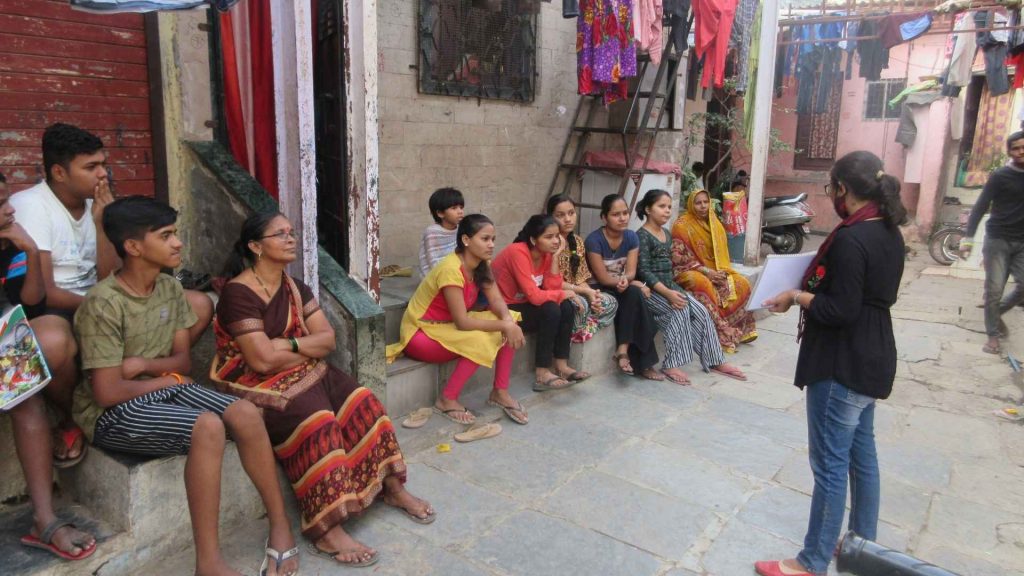
4. Circular Economy Integration
Earth5R’s circular economy model transforms waste into economic value, showcasing a closed-loop system where high-value plastics become raw materials, low-value plastics yield industrial oil through pyrolysis, and repurposed waste creates sustainable products.
This innovative approach reduces landfill dependency, supports industrial needs, and establishes a scalable blueprint for global waste management.
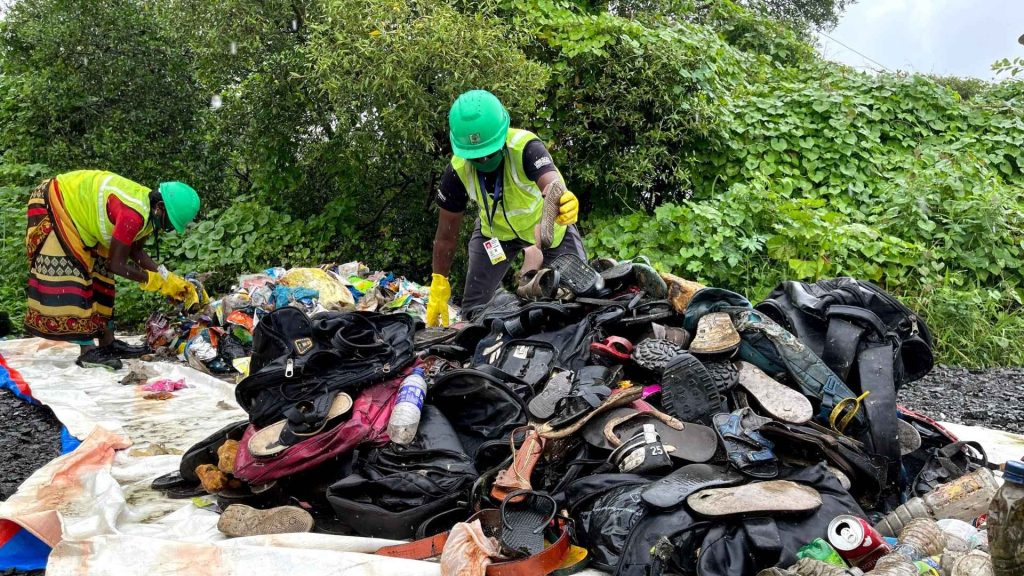
Earth5R’s approach extends beyond cleanup by integrating circular economy principles:
- Recycling: High-value plastics are recycled into raw materials for manufacturing.
- Pyrolysis Technology: Low-value plastics are processed into industrial oil, reducing landfill dependency.
- Product Development: Waste is repurposed into sustainable goods, demonstrating the economic potential of a circular economy.
This closed-loop system not only reduces waste but also generates economic value, creating a scalable model for waste management.

5. Leveraging Advanced Technology
Earth5R harnesses advanced technology to revolutionize waste management, employing drones for precise river mapping and hotspot identification, while AI-powered data analytics monitor waste flow and optimize recovery.
These tools enable data-driven decisions, maximize efficiency, and provide replicable insights, setting a new standard for technology-integrated environmental restoration projects.
The project incorporates cutting-edge tools to enhance its impact:
- Drone Mapping: Drones map the river pre- and post-project, providing data on waste hotspots and tracking progress.
- AI and Data Analytics: Advanced data systems monitor waste flow, optimize recovery efforts, and predict pollution patterns.
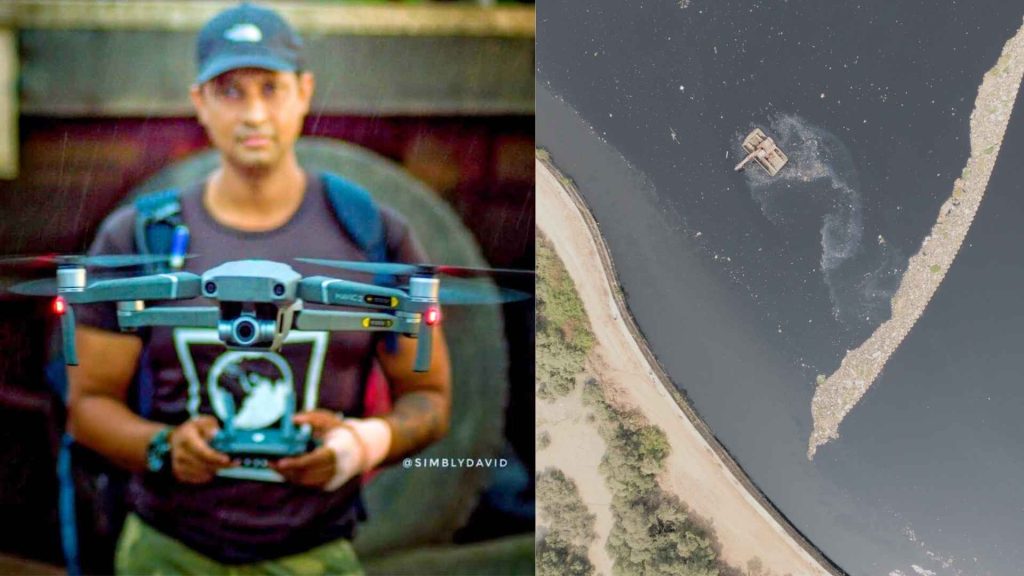
Outcomes and Measurable Impact of the Mithi river plastic waste cleanup project
1. Environmental Impact – the Mithi River Plastic waste problem
The Mithi river plastic waste cleanup project has transformed the Mithi River, removing pollutants to revive aquatic ecosystems, restore water quality, and alleviate monsoon flooding. By addressing the root causes of environmental degradation, the project creates measurable ecological recovery and urban resilience, showcasing the potential for impactful, scalable environmental interventions.
- Waste Removal: Over 11,100 tons of waste, including 4,440 tons of plastic, have been removed from the river.
- Biodiversity Revival: Improved water quality has led to a gradual return of aquatic life.
- Flood Mitigation: Clearing blockages has reduced flooding risks during monsoon seasons.
2. Carbon Emission Reduction
Recycling plastic waste, results in carbon offset of 6,660 tons of CO₂. It also shows the critical role of circular economy initiatives in achieving urban sustainability goals. The data validates the integration of waste management reforms into broader climate policies, advancing both local and national carbon reduction targets.
- Carbon Offset: Recycling 4,440 tons of plastic has prevented 6,660 tons of CO₂ emissions, demonstrating the project’s environmental benefits.
3. Social and Economic Impact
Integrating recycling and upcycling into the project has created sustainable livelihoods, demonstrating how inclusive policies can align ecological restoration with economic empowerment for marginalized populations.
- Community Participation: Over 15,000 volunteers have actively engaged in cleanup drives.
- Livelihood Creation: Recycling and upcycling activities have generated sustainable income for local communities.
The Role of Solar Power in Sustainability
The integration of solar-powered technology in the Mithi River plastic waste cleanup project serves as a model for using clean energy to solve pressing environmental challenges. The solar-powered unit:
- Demonstrates how renewable energy can drive large-scale waste management solutions.
- Minimizes the project’s carbon footprint, ensuring that cleanup efforts are truly sustainable.
- Offers a replicable solution for other polluted rivers worldwide.

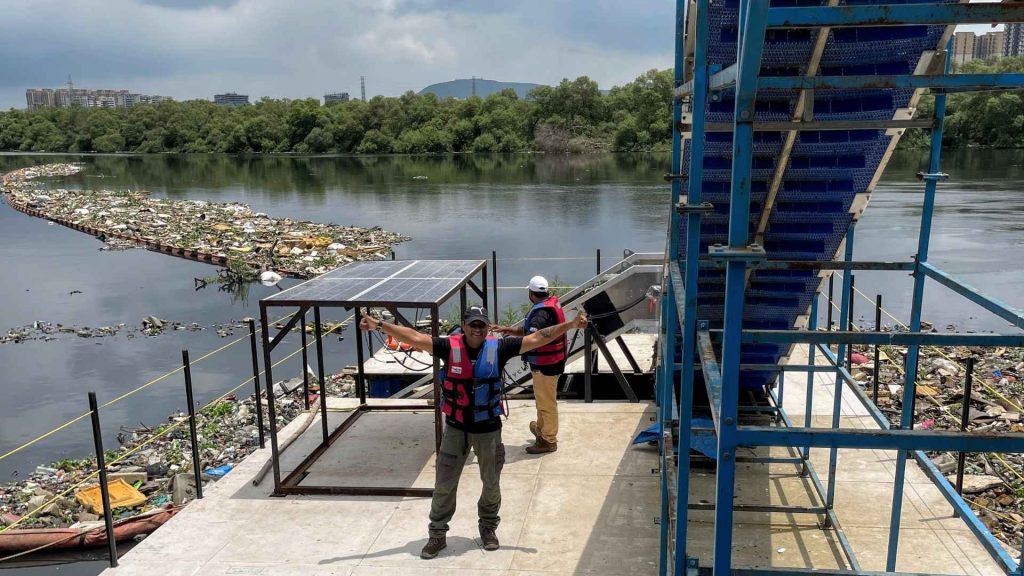
Scaling the Model– Mithi River Plastic Waste Cleanup Project
The Mithi River project is more than a local cleanup—it is a blueprint for tackling river pollution worldwide. With its innovative solar-powered technology, circular economy approach, and community engagement model, the project has the potential to be replicated in polluted waterways across the globe.
Earth5R is already exploring opportunities to expand its 5R model to other river-based communities, proving that sustainable solutions can transform ecosystems and empower communities.
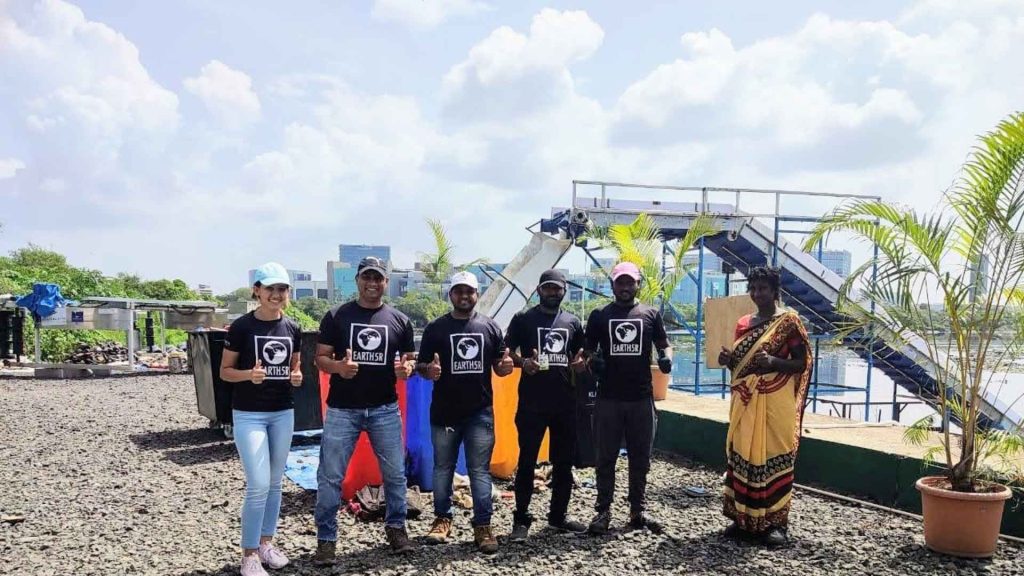
The Mithi River Plastic Waste Cleanup Project is a great example of how innovation, collaboration, and community-driven action can address even the most complex environmental challenges. With over 11,100 tons of waste removed, a cutting-edge solar-powered recovery system in place, and thousands of lives impacted, the project has set a new standard for sustainable river restoration.
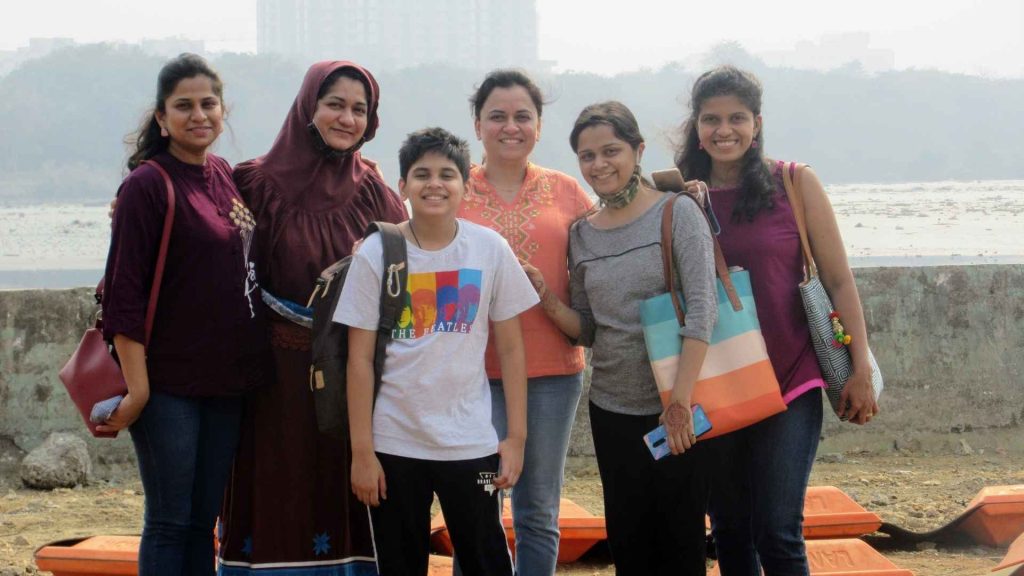
Earth5R’s commitment to renewable energy and circular economy principles ensures that this initiative is not just a cleanup—it is a movement for long-term change. By turning waste into value, empowering communities, and leveraging solar power, Earth5R is paving the way for a cleaner, healthier, and more sustainable future.
Join the Movement: Partner with Earth5R to scale this innovative model and make a global impact. Together, we can turn rivers of waste into rivers of hope.

